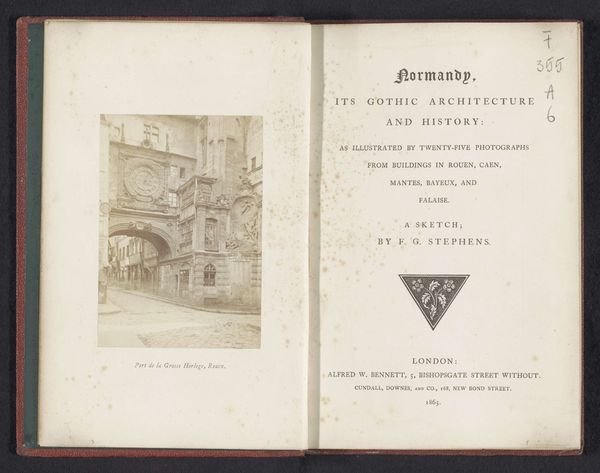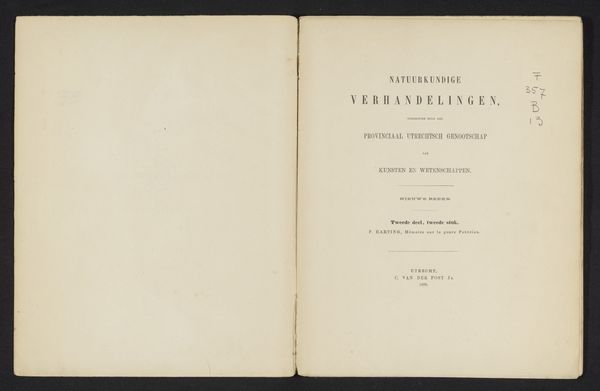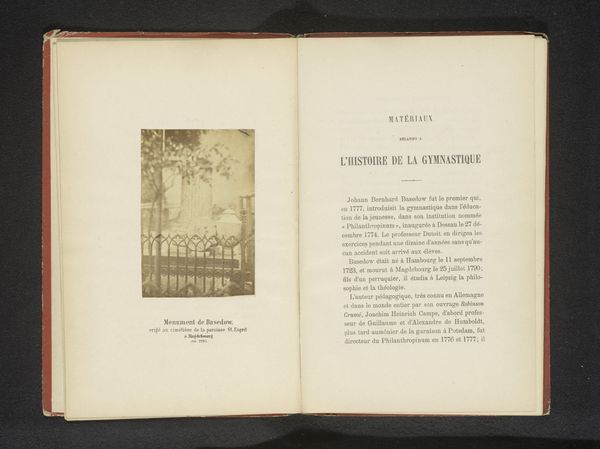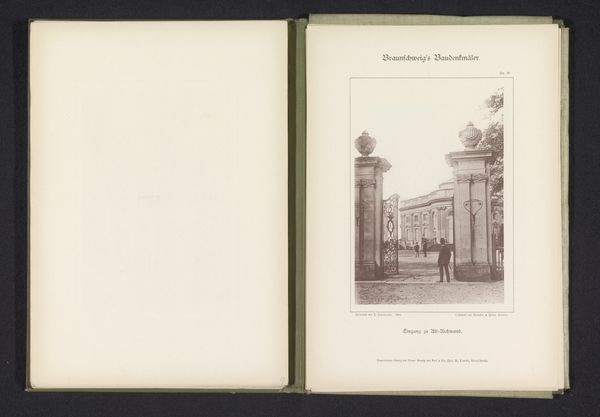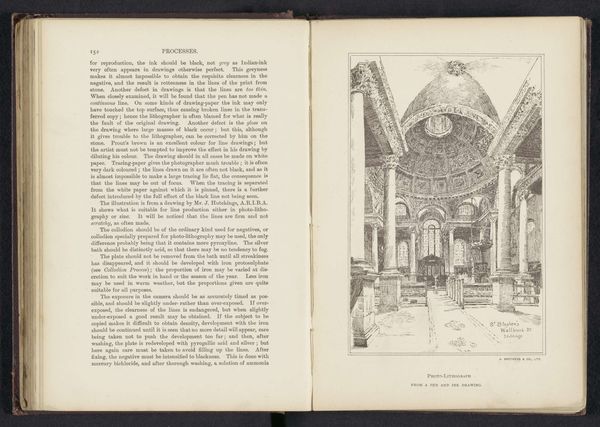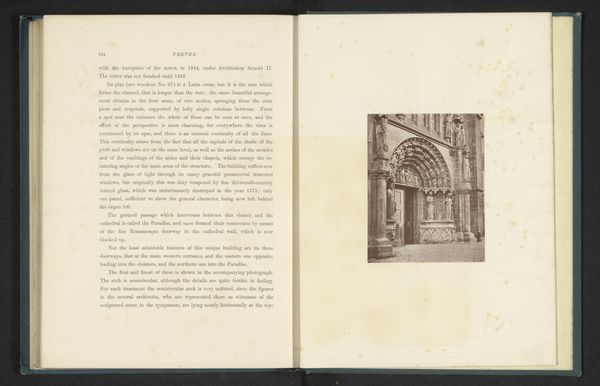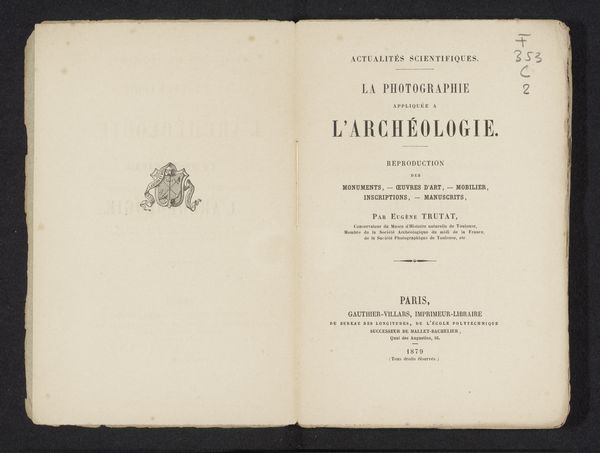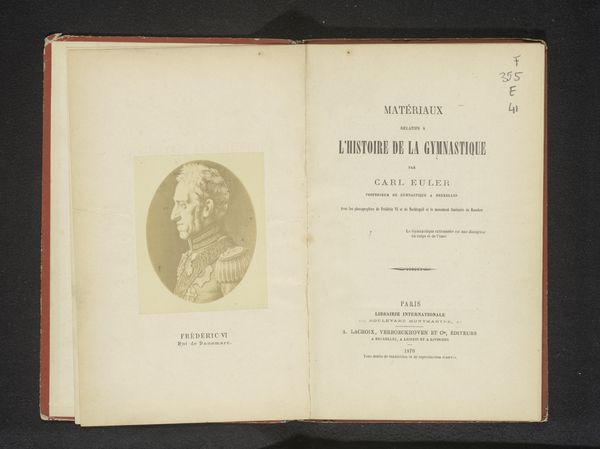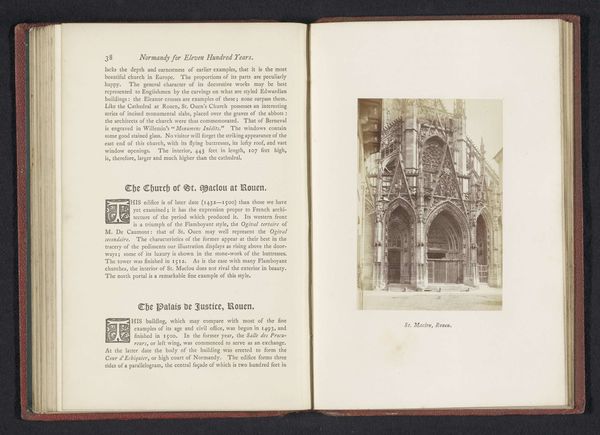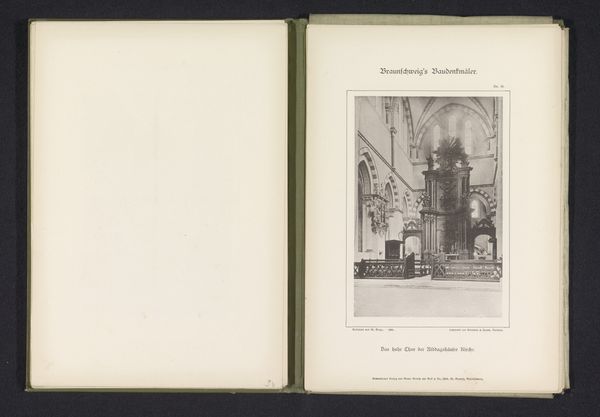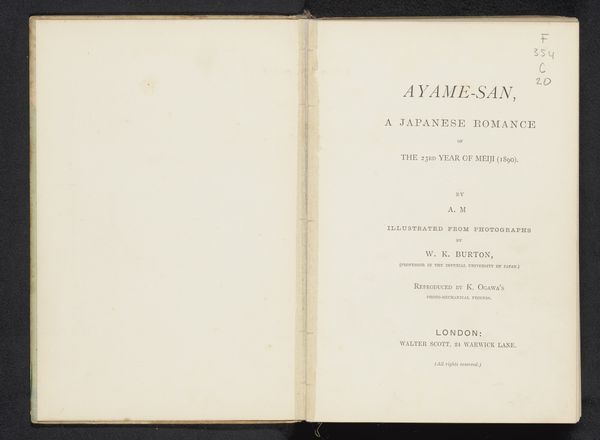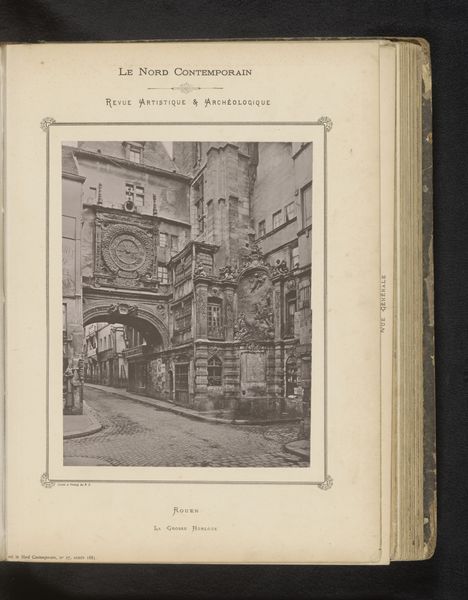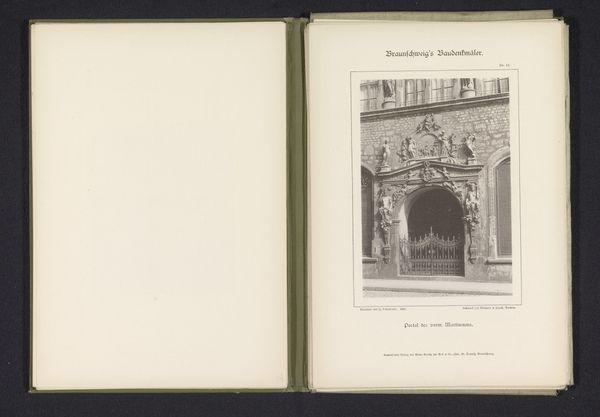
Normandy, its gothic architecture and history, as illustrated by twenty-five photographs from buildings in Rouen, Caen, Nantes, Bayeux, and Falaise 1865
0:00
0:00
#
script typeface
#
aged paper
#
homemade paper
#
sketch book
#
hand drawn type
#
personal journal design
#
personal sketchbook
#
hand-drawn typeface
#
thick font
#
historical font
Dimensions: height 218 mm, width 146 mm, thickness 18 mm
Copyright: Rijks Museum: Open Domain
This is a photograph from a book by Frederic George Stephens, capturing the gothic architecture and history of Normandy. At first glance, the monumental clock stands out, an emblem of temporal order. The clock, beyond its utilitarian function, becomes a powerful symbol. Think of the sundials of ancient Egypt, or the hourglasses meticulously depicted in vanitas paintings; timekeeping devices have long served as reminders of mortality and the fleeting nature of existence. The hands of this clock may remind us of the relentless march of time. Consider the Gothic arch through which the street recedes. Arches, employed in Roman aqueducts and Renaissance gateways, create a sense of passage and continuity. It reappears throughout history, each time carrying echoes of the past while adapting to new cultural landscapes. As you gaze upon this photograph, allow yourself to contemplate the enduring power of these symbols, their evolution, and their capacity to resonate across time.
Comments
No comments
Be the first to comment and join the conversation on the ultimate creative platform.
